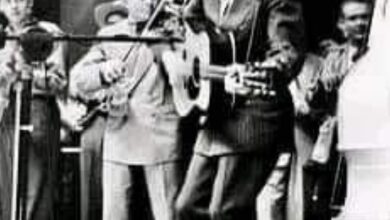The Authentic Tone of The Soggy Bottom Boys in “Man of Constant Sorrow”
“Man of Constant Sorrow” is a classic folk ballad that connects deeply with the human experience, weaving a tapestry of sorrow, hardship, and resilience throughout its verses. The song conveys a narrative that transcends time, capturing the weight of personal struggle and the yearning for solace. Its origins lie in early 20th-century American folk music, where storytelling through song became a vehicle for expressing the emotions of ordinary lives marked by toil and tribulation. These themes resonate across generations, making the song an enduring piece of cultural heritage.
The version that gained prominence through the film “O Brother, Where Art Thou?” introduces the ballad to a wider audience, effectively intertwining music and storytelling. In this Coen brothers’ film, the characters face a range of challenges against the backdrop of the Great Depression. The Soggy Bottom Boys serve as a narrative device to highlight the quest for redemption, echoing the longing encapsulated in “Man of Constant Sorrow.” The film’s setting in the rural South complements the song’s themes, enriching both the cinematic and musical experience for viewers, and creating a cultural revival.
Dan Tyminski’s interpretation of the song has elevated its profile, showcasing his virtuosity as a musician and his ability to infuse emotions into the lyrics. As a prominent member of Alison Krauss and Union Station, Tyminski has carved out a significant space in the world of bluegrass music. His vocal delivery, combined with skillful guitar work, resonates with authenticity, bridging the old and new. This blend allows the song to maintain its traditional roots while appealing to modern audiences, further solidifying its place in the contemporary music landscape.
The essence of “Man of Constant Sorrow” lies within its lyrics, which paint a vivid picture of melancholy and longing. The protagonist, burdened by the weight of past experiences, draws listeners into a world where loss is palpable and sorrow is a constant companion. This relatability speaks volumes, as many individuals resonate with themes of heartache and the quest for belonging. It serves as a reminder that while one’s journey may be fraught with difficulties, music can provide a form of solace and connection that transcends the individual experience.
The soundtrack of “O Brother, Where Art Thou?” plays a pivotal role in rejuvenating interest in folk and bluegrass music. By drawing attention to traditional American sounds, the film not only celebrated the genre but also cultivated a new following that sought to explore its roots. This resurgence inspired a wave of festivals and performances dedicated to folk music, as audiences delved into the rich history and cultural significance of the genre. The impact of the soundtrack is undeniable, as it breathed new life into songs that had previously been overlooked or underestimated.
Furthermore, the collaborative elements heard in the recording of “Man of Constant Sorrow,” provided by vocalists Harley Allen and Pat Enright, enrich the auditory experience. Their harmonies add depth and complexity, allowing the song’s emotional resonance to echo even more profoundly. In folk and bluegrass traditions, harmony often acts as a means of collectively sharing a story, enriching both the narrative and its delivery. This cooperative spirit enhances the song’s melancholic themes, encapsulating a communal journey through sorrow.
Throughout its history, “Man of Constant Sorrow” has attracted a diverse array of artists across various musical genres, with each rendition reflecting a unique perspective on the core themes. From country and bluegrass to alternative and rock interpretations, every cover introduces the ballad to fresh audiences while preserving its essence. This continued reinvention ensures that the song remains alive, evolving alongside contemporary music while still honoring its timeless storytelling.
The film’s portrayal of the song further underscores the symbiotic relationship between music and visual storytelling. The characters’ struggles, seamlessly intertwined with the music, evoke an emotional response that lingers long after the movie concludes. This interplay of narrative and melody illustrates how music enhances storytelling, creating a resonance that deepens the viewer’s experience and understanding of the characters’ journey.
Dan Tyminski’s ongoing contributions to the music world underscore the lasting appeal of “Man of Constant Sorrow” within the folk genre. As audiences increasingly embrace traditional music, songs like this one gain renewed importance as vehicles for empathy and connection. The themes of sorrow, resilience, and redemption continue to resonate deeply, reaffirming the notion that music has a remarkable power to articulate shared experiences and emotions.
The ongoing popularity of “Man of Constant Sorrow” solidifies its status as a significant piece of American folklore. It captures the essence of human struggle and the universal search for understanding in the midst of suffering. As listeners continue to find solace in its haunting melody and poignant lyrics, the song serves as a timeless reminder of the shared narratives of humanity, woven together through the enduring tradition of storytelling in music.





